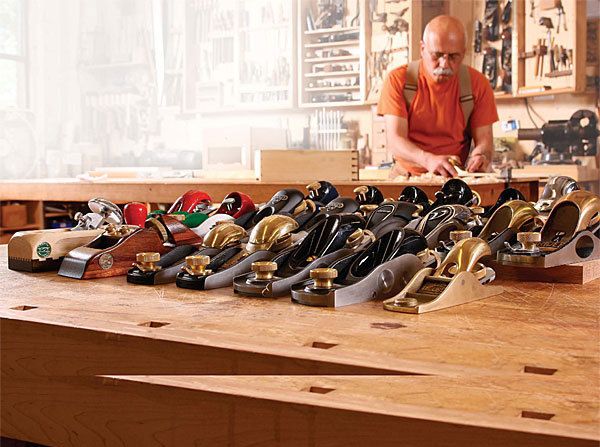Tool Test: Block Planes
We tested them all, but low-angle is your best bet
Synopsis: Because a block plane gets so much use, it’s important that you get a very good one, one that fits your hand, cuts well, and adjusts easily. Choose wisely and you’ll have a trusted friend for life. Choose poorly, and you’ll kick yourself many times over. We gathered 23 of the most popular block planes on the market (both standard- and low-angle models), ranging in price from $30 to $285, and compared their performance and quality head to head, running each one through a gauntlet of common shop tasks. We’ll tell you which ones are the best, and why a low-angle model is really all you need. Low-angle planes tested include: Anant 60-1Ú, Groz Low-angle, Lie-Nielsen 60-1Ú2, Lie-Nielsen 102, Rider 60-1Ú2, Stanley 60-1Ú2, Stanley Sweet Heart 60-1Ú2, Veritas DX60, Veritas NX60, Veritas Low-Angle Block Plane, and Wood River.
I’d be lost without my block plane. Though small, this tool has a big place in my woodworking, and I use it at least a dozen times each day when I’m in the shop. I trust it to bestow the critical finishing touches on a project, like carefully fitting a drawer into a carcase. The plane’s small size makes it easy to control on an assembled piece, say for chamfering a table edge, and well-suited for jobs like removing machine marks from the edges and ends of a board, planing curved edges, and trimming joinery flush.
Because a block plane gets so much use, it’s important that you get a very good one, one that fits your hand, cuts well, and adjusts easily. Choose wisely and you’ll have a trusted friend for life. Choose poorly, and you’ll kick yourself many times over.
I gathered 23 of the most popular block planes on the market (both standard- and low-angle models), ranging in price from $30 to $285, and compared their performance and quality head to head, running each one through a gauntlet of common shop tasks. In the end I discovered that a low-angle block plane is really all you need (see “The argument for a higher angle,” p. 41), and also which ones are the best.
What’s important in any block plane
You want the tool to be comfortable to hold, wellmachined, and free of defects, such as burrs and rough spots. When it comes to weight and mass, it’s a tough balancing act. A heavier block plane will work better when using the full width of the blade, or planing end grain, because the weight and mass help increase inertia and lessen the force needed to keep the tool moving. But for most jobs a block plane is meant to perform, like chamfering, weight is less of an issue. I recommend a two-handed grip when possible, but for those other times, a compact, well-balanced model will be easier to control.
Because these tools lack a chipbreaker, a thicker blade is paramount, as it will dampen vibration and chatter, providing a smoother cut. The blade also should be well-prepped from the factory, with a flat back and a square tip, ground to the proper bevel. You’ll need to hone the edge for true sharpness, but you shouldn’t have to do a whole lot more than that.
Blade adjustments also should be easy and smooth, and they must hold during use. You’ll also want the blade to be relatively easy to remove and replace for sharpening.
For the full article, download the PDF below:
Fine Woodworking Recommended Products

Marking knife: Hock Double-Bevel Violin Knife, 3/4 in.

Veritas Wheel Marking Gauge

Veritas Precision Square






















Log in or create an account to post a comment.
Sign up Log in